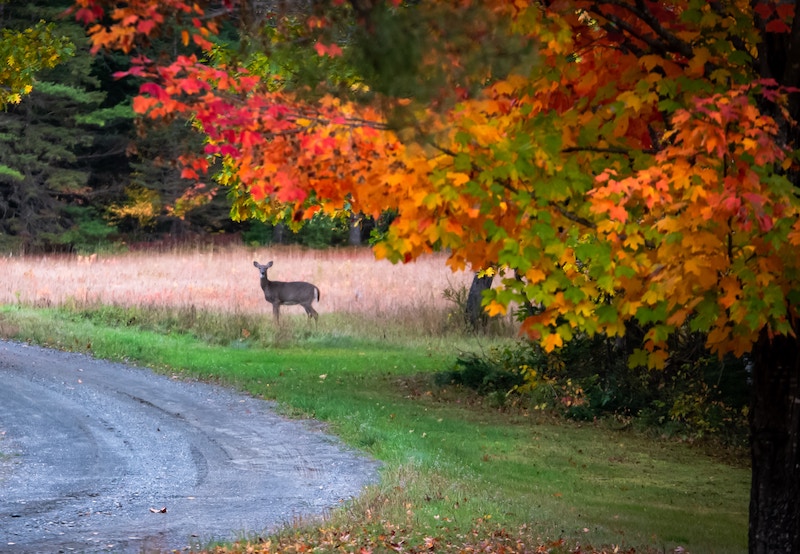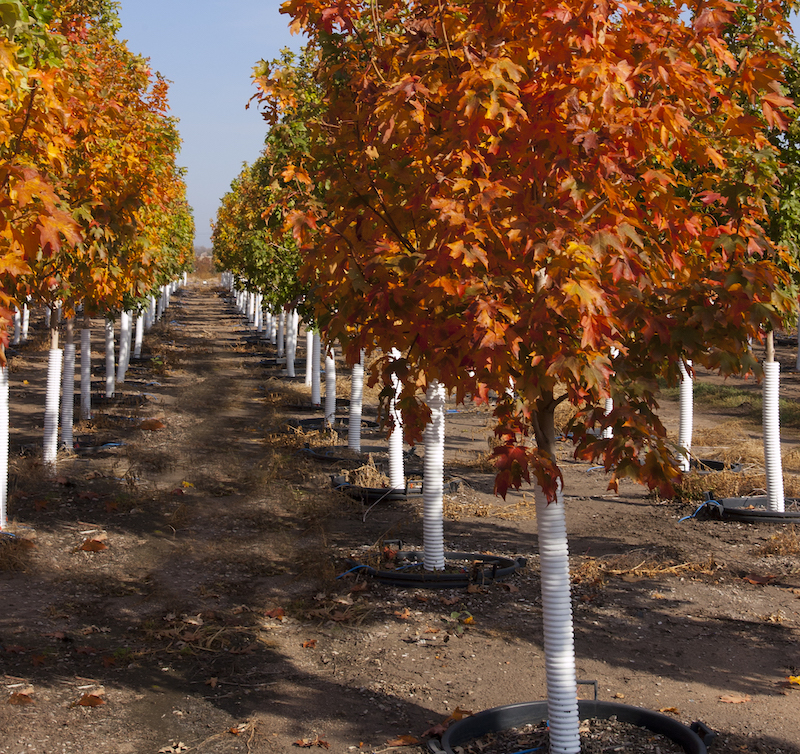Maple trees paint landscapes with green, orange, and reddish hues during the spring, summer, and fall. As spring temperatures rise and leaves unfurl, hungry critters may snack on maple’s leaves, and later during the fall and winter, its buds, twigs, and dead foliage can prove equally appealing. When something more delectable is nowhere to be found growing nearby, animals, including deer, squirrels, and moose, may consider munching. Deer, especially attracted to tender leaves hanging within six feet of the ground, may appear a threat at first, but a bed of their favorite foods, such as azaleas and hostas, will often turn their eyes⎯and their teeth⎯away.

According to Rutgers University, this plant is Seldom Severely Damaged or Occasionally Severely Damaged depending on the particular species on their rating scale from Rarely Damaged to Frequently Severely Damaged.
| Rarely Damaged |
| Seldom Severely Damaged |
| Occasionally Severely Damaged |
| Frequently Severely Damaged |
| Rarely Damaged |
| Seldom Severely Damaged |
| Occasionally Severely Damaged |
| Frequently Severely Damaged |
If you have a Japanese maple, paperbark maple, red maple, striped maple, or sugar maple, your tree should be fine even if deer are likely nearby. If you have a Norway maple or a silver maple, deer may eat them.

Keeping Deer Away From Maple
There are several ways to protect maple trees from hungry deer. The most effective method is building a durable six-to-eight-foot fence that deer are hesitant to jump. Another tool is deer repellant. This can be a commercial repellant or one you make at home. You can also add deer-repellant aromas around maple by planting sage, mint, lavender, thyme, garlic, and onions or hanging nylons full of human hair, bars of soap, or exceptionally foul-smelling sweaty shirts among its branches. Focus on protecting the foliage, limbs, and bark within six feet of the ground. If the problem is a deer rubbing its antlers on maple’s bark to remove velvet in the fall, wrap a vinyl spiral wrap around the base of the tree.
Will Maple Come Back After Deer Eat Them?
Damage caused by bucks rubbing their antlers to remove the velvet during the fall is the most concerning problem maple may sustain. However, depending on the severity of the damage, maple can survive. Note whether the bark has been rubbed only on the side of the tree or if the damage encompasses the tree’s circumference. The tree will likely recover without help if the damage is just on one side. If the damage goes all the way around the trunk, however, it will be girdled, and girdling unfortunately leads to death. You can leave the ungirdled damage to heal on its own.
Sources: Rutgers New Jersey Agricultural Experiment Station ‘Landscape Plants Rated by Deer Resistance’ 2018
 |
Author Suellen Barnes - Published 4-28-2023 |
